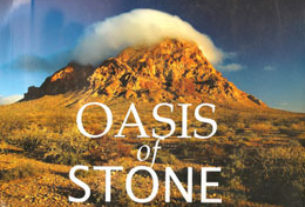One of the great romantic stories of Mexico concerns Felipe Carrillo Puerto, a Governor of Yucatan, and Alma Reed, an American newspaper columnist in San Francisco.
Back in the early 1920’s, Alma Reed wrote a column under the byline “Mrs. Goodfellow” that was devoted to answering questions for people who sought legal advice but could not afford the services of a lawyer. Through the tremendous volume of letters that came pouring into the newspaper addressed to Mrs. Goodfellow, it became apparent that the majority of people in the greatest need of help were the poor Mexicans living in California. Always on the side of the disadvantaged, Reed began concentrating her efforts on that segment of the population.
As Reed’s reputation as a defender of the oppressed grew, she was contacted by the family of a 17-year old Mexican, who was sitting on death row in San Quentin, accused of murder. They asked for Reed’s help in getting his death sentence commuted. Through her column, Reed took her campaign to save the lad to the women voters of California, who were outraged at the idea of killing an adolescent. As a result, the laws were changed and the young man’s life was saved.
The Mexican press picked up the story and the publicity caught the attention of then-President Alvero Obregón of Mexico, who invited Reed to visit his country as his guest. Accepting the invitation, she boarded a train and made the journey, alone, to Mexico.
Her lack of knowledge of Mexico and its customs became apparent as she stepped off the train in Mexico City. A group of mariachis had been engaged to serenade the wife of a Mexican businessman who was traveling on the same train. As the train pulled into the station, the mariachis began singing the love ballad, “Alma de mi Alma,” (Soul of my soul).Thinking the song was meant for her, Alma Reed was so touched she broke into tears, alternately embracing the mariachis and President Obregon’s aide who was there to greet her. Careful not to hurt her feelings, the Mexicans did not tell her that the serenade was not intended for her and had no relation to anyone named Alma.
During her stay in Mexico, Reed traveled to Yucatan where she met Governor Felipe Carrillo. The two fell deeply in love at first sight, and Carrillo traveled with her throughout the Yucatan, pointing out sites of historical interest and introducing her to the culture and the history of the Maya.
At the end of Alma Reed’s visit to Mexico, the governor returned with her to San Francisco to meet her family and tell them of their plans to marry. The family was enchanted with Carrillo and gave their blessing for the marriage. Felipe made plans to return to Mexico where the wedding would take place, with Alma Reed to follow in three weeks. Alma Reed never saw Felipe Carrillo Puerto again, but one of the engagement gifts he presented her with has survived in Mexico for over eighty years. Having been told the story of her emotional reaction to “Alma de mi Alma,” Felipe, with the help of famous Mexican musicians and composers Ricardo Palmerin and Luis Vega, wrote the song, “La Peregrina” and dedicated it to her. The song tells of a Yucatan Governor who fell in love with a girl from California, who came to Mexico to interview him, and how they fell in love.
When Governor Carrillo arrived home he faced a crisis. These were tumultuous times in Mexico, the revolution that had blazed across the country for ten years and put eleven different presidents in office, had broken out again, this time between the ruling political power in Mexico and the poor farmers. Feelings ran high in Yucatan, split between the revolutionaries and the Mayas. Even though Governor Carrillo was part of the hated government, the Mayas looked upon him as their savior.
The Mayas had been enslaved and ill treated by Mexico’s Spanish conquerors, and they had lived in fear of the harsh punishment they received at the hands of the Spanish landowners. The Mexican Revolution against Spanish colonial rule had ended all this, and now, under Governor Carrillo, the Mayas were building schools for their children and planting crops for themselves. Realizing that the Mayas would never join their cause as long as Felipe was alive, the revolutionaries began plotting his assassination.
On a bleak December day in Mérida, capitol city of Yucatan, Carrillo and ten of his most loyal followers were taken by force, lined up against the wall of a cemetery, and summarily shot to death. Before the order was given, Felipe took a Mayan wedding ring from his pocket and asked the leader of the firing squad to see that it was delivered to Alma Reed. With that exchange, the command was given to fire.
During this period, Mexico closed its borders to travelers and a year went by before Alma Reed learned the fate of Felipe. When the trouble was over, she returned to Yucatan, this time working as a journalist for the New York Times. The discovery of King Tut’s tomb in Egypt had created a fascination in the world for archaeology. Through Alma Reed’s stories in the Times they learned about another ancient civilization, the Maya, whose achievements were equally as astonishing as those of ancient Egypt.
During the 1930’s Reed’s life took a turn. She left Mexico for New York and was reported living for short periods in Greece and Lebanon. Returning to New York, she ran with an arty crowd that included the artist Orozco. She was so taken with his talent; she began writing about him and is credited with bringing him to the world’s attention.
In 1950, Alma Reed returned to Mexico to Quintano Roo, one of Mexico’s two federal territories, and again took up writing about Maya. Sharing borders with the British Honduras, Guatemala, and the Mexican states of Campéche and Yucatan, most of the population of Quintano Roo was descended from the Maya.
1950 was also the year that the Mexican government awarded Reed its highest civilian award, The Order of the Aztec Eagle.
Alma Reed died at age 77 in a Mexico City hospital, on November 20, 1966, the day of Mexico’s Independence. The day she would have chosen if she could. Her closest friends reported that she had finished writing her autobiography, and anticipated going home from the hospital and sending the manuscript to her publishers. The manuscript was never found. Her closest friends searched and made inquires about it for months following her death, but it never surfaced.
The ashes of La Peregrina were laid close to those of Felipe Carrillo Puerto, her martyred governor. Her epitaph reads: “Alma Reed, prolific writer, emotive conversationalist, affectionate friend of Mexico who Mexico honored with the Aztec Eagle in recognition of her merits as a promoter of art, in critique, as an historian, and humanist.”
PEREGRINA
(Ricardo Palmerín/Luis Rosado Vega)
Peregrina de ojos claros y divinos
y mejillas encendidas de arrebol,
mujercita de los labios purpurinos
y radiante cabellera como el sol.
Peregrina que dejaste tus lugares,
los abetos y la nieve y la nieve virginal
y veniste a refugiarte en mis palmares
bajo el cielo de mi tierra, de mi tierra tropical.
Las canoras avecillas de mis prados,
por cantarte dan sus trinos si te ven
y las flores de nectarios perfumados,
te acarician en los labios, en los labios y en la sien.
Cuando dejes mis palmeras y mi tierra,
Peregrina del semblante encantador:
No te olvides, no te olvides de mi tierra,
no te olvides, no te olvides de mi amor.
Las canoras avecillas de mis prados,
por cantarte dan sus trinos si te ven
y las flores de nectarios perfumados,
te acarician en los labios, en los labios y en la sien.
Cuando dejes mis palmares y mi tierra,
Peregrina de semblante encantador:
No te olvides, no te olvides de mi tierra,
no te olvides, no te olvides de mi amor.


